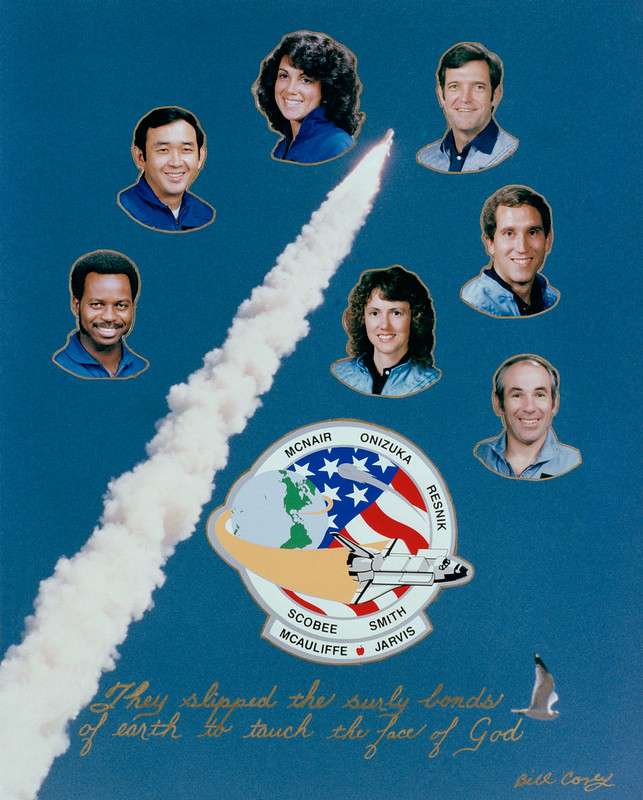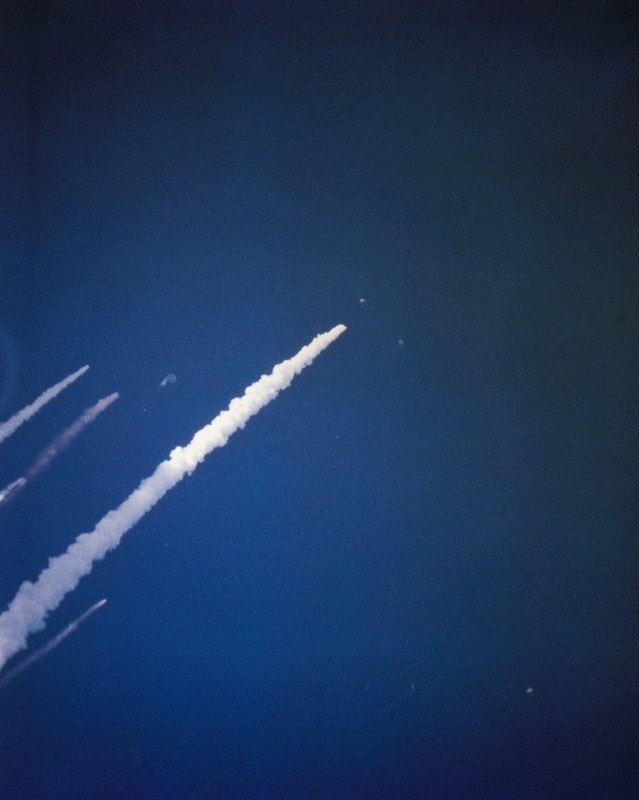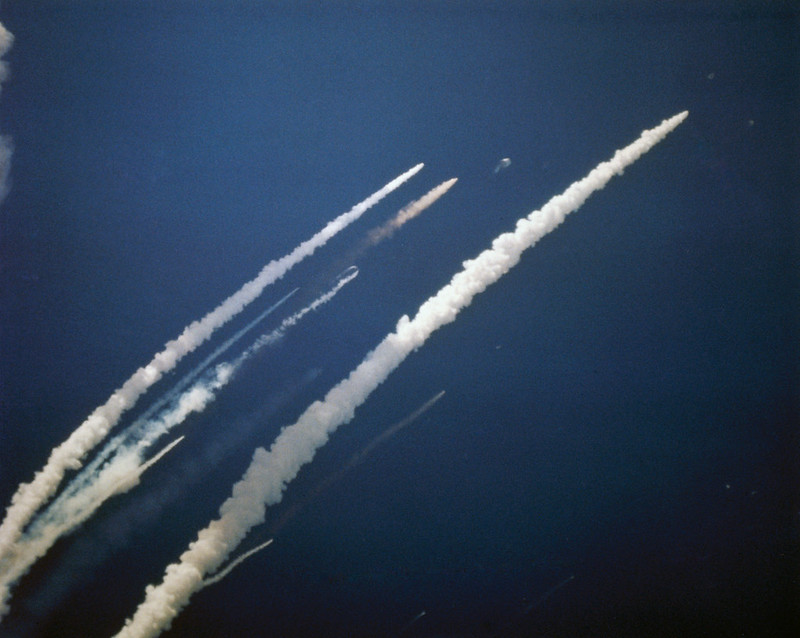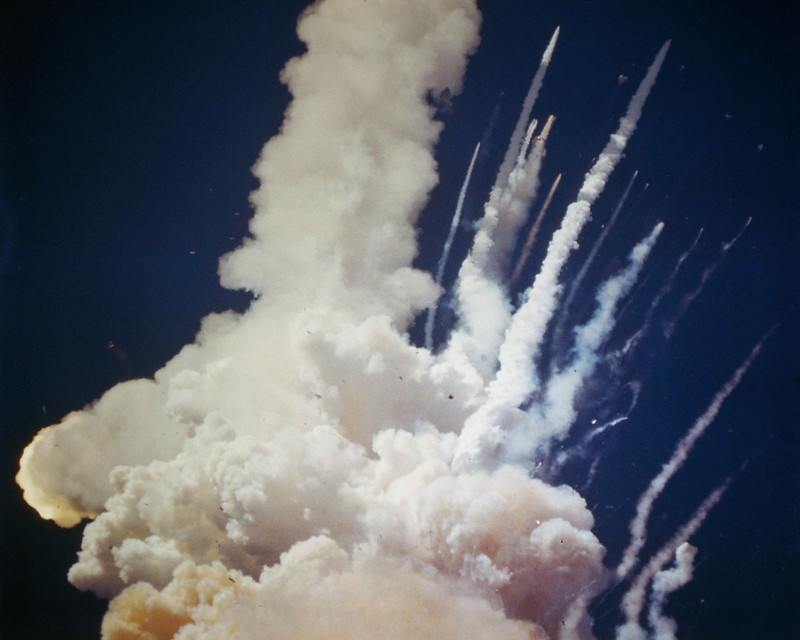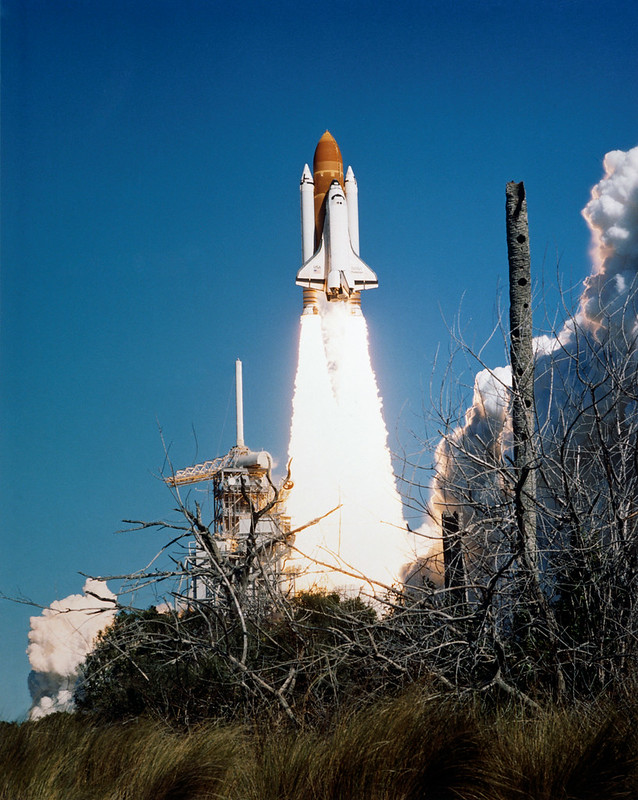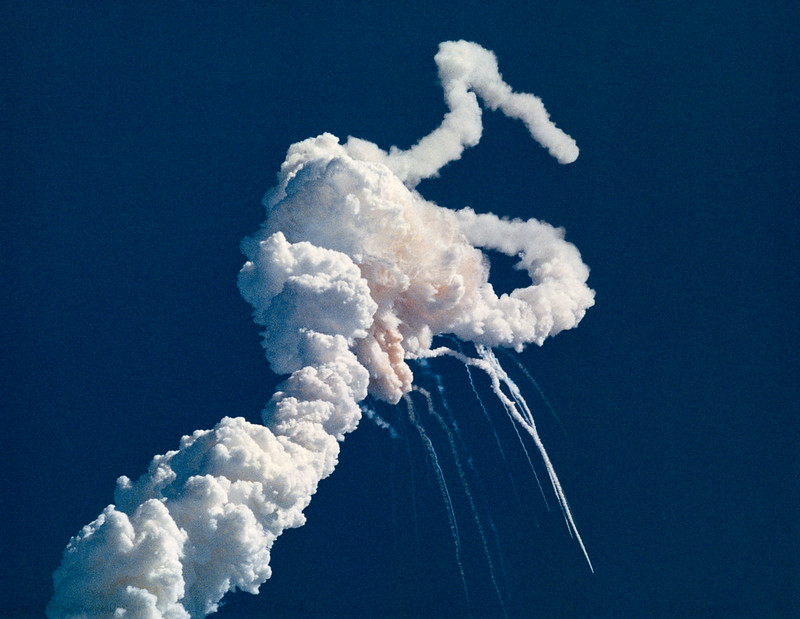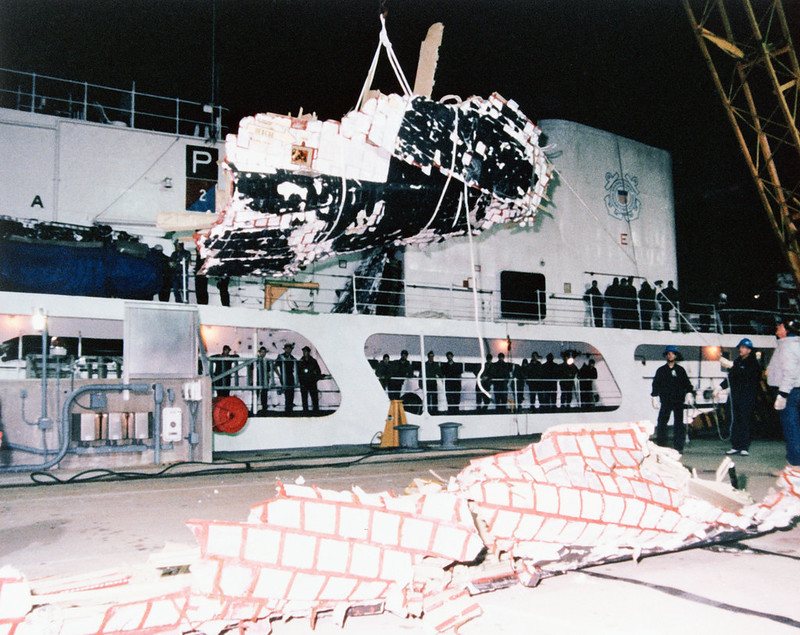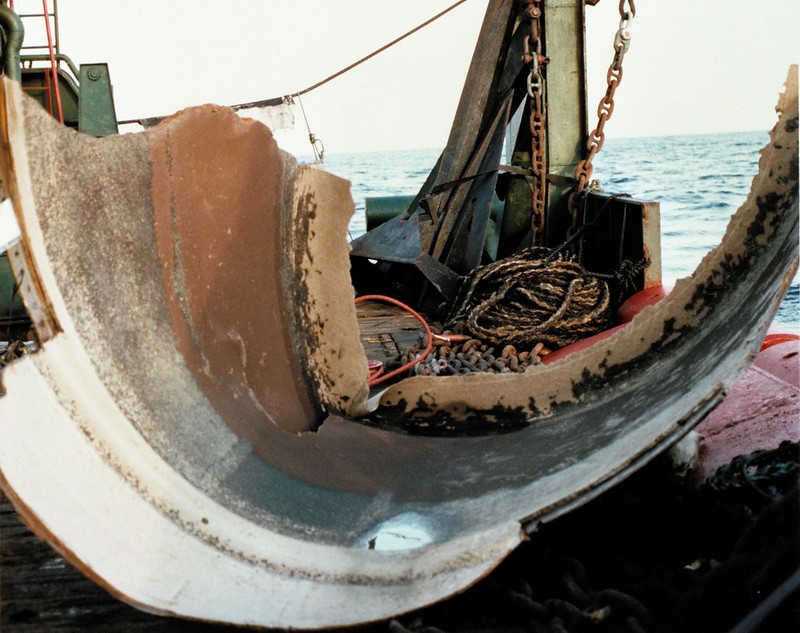STS-51L Fact Sheet
By Cliff Lethbridge
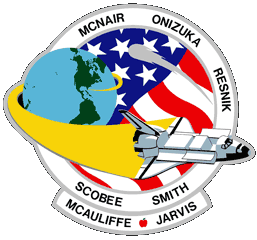
STS-51L — Challenger
25th Space Shuttle Mission
10th Flight of Challenger
Crew:
Francis R. Scobee, Commander
Michael J. Smith, Pilot
Judith A. Resnik, Mission Specialist
Ellison S. Onizuka, Mission Specialist
Ronald E. McNair, Mission Specialist
Sharon Christa McAuliffe, Teacher in Space
Gregory B. Jarvis, Payload Specialist
Orbiter Preparations:
Tow to Orbiter Processing Facility – November 11, 1985
Rollover to Vehicle Assembly Building – December 16, 1985
Rollout to Launch Pad 39B – December 22, 1985
Launch:
January 28, 1986 – 11:38:00 a.m. EST. This was the first Space Shuttle launch from launch pad 39B. Launch was originally scheduled for January 22, 1986, but slipped to January 23, 1986 then January 24, 1986 due to delays associated with STS-61C.
Launch was reset for January 25, 1986 because of bad weather at the trans-Atlantic abort site at Dakar, Senegal. To utilize Casablanca, Morocco, which was not equipped for night landings, a decision was made to change Challenger’s launch time from afternoon to morning.
However, a January 25 launch was not possible because the launch support team was unable to meet the new launch time. Launch was rescheduled for January 27, 1986 due to the forecast of unacceptable launch weather on January 26, 1986.
Challenger’s crew boarded the Shuttle for the first actual launch attempt on January 27, 1986. However, following astronaut entry, a ground service equipment hatch closing fixture could not be removed from the hatch. The fixture was sawed off and an attaching bolt was drilled out before the closeout operation was completed.
During this lengthy and unusual delay, crosswinds at the Shuttle’s emergency landing runway at the Kennedy Space Center rose to unacceptably high limits, forcing a scrub.
January 28 launch was delayed 2 hours when the hardware interface module in the launch processing system, which monitors the fire detection system, failed during liquid hydrogen tanking procedures.
Mission Summary:
The mission featured America’s “Teacher in Space” Sharon Christa McAuliffe. McAuliffe was scheduled to teach lessons from space which would be distributed live via satellite to schools throughout the world.
The primary payload was the Tracking and Data Relay Satellite-2 (TDRS-2), originally scheduled to fly aboard canceled mission STS-51E.
Other payloads included the Shuttle-Pointed Tool for Astronomy-203 (SPARTAN-203)/Halley’s Comet Experiment Deployable, a free-flying module designed to observe the tail and coma of Halley’s Comet with two ultraviolet spectrometers and two cameras.
The manifest also included the Fluid Dynamics Experiment (FDE), Comet Halley Active Monitoring Program (CHAMP), Phase Partitioning Experiment (PPE) and three SSIP experiments.
An explosion 73 seconds after launch resulted in the loss of Challenger and crew.
SELECTED NASA PHOTOS FROM STS-51L

